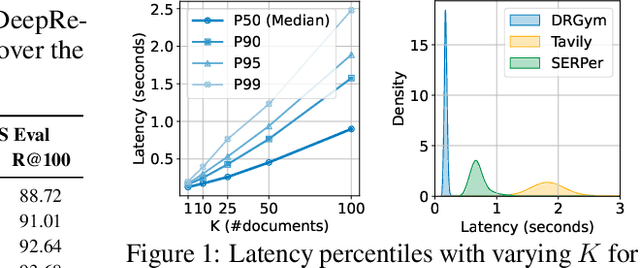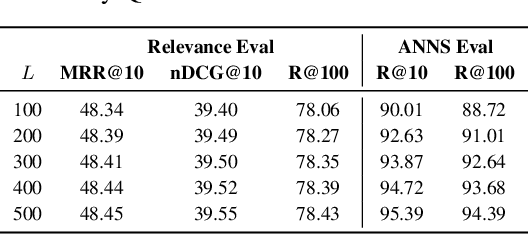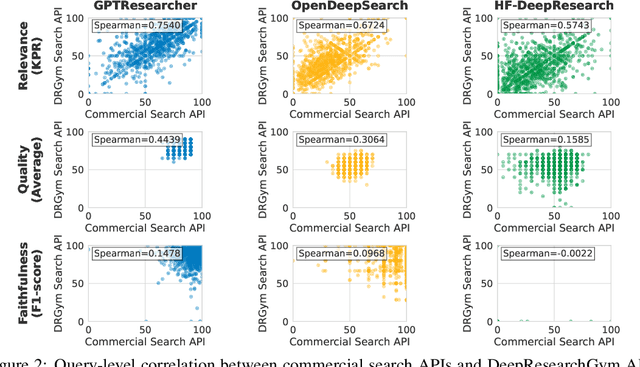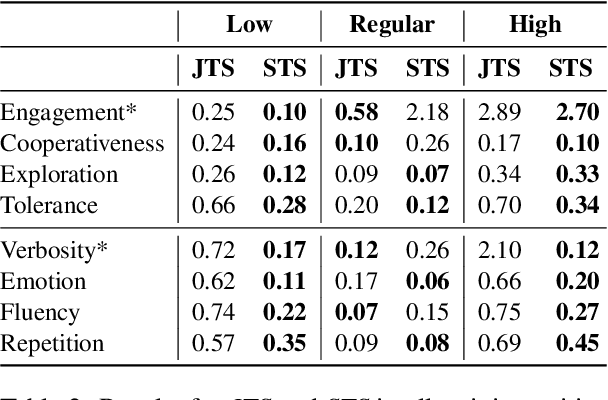João Magalhães
RedTWIZ: Diverse LLM Red Teaming via Adaptive Attack Planning
Oct 08, 2025Abstract:This paper presents the vision, scientific contributions, and technical details of RedTWIZ: an adaptive and diverse multi-turn red teaming framework, to audit the robustness of Large Language Models (LLMs) in AI-assisted software development. Our work is driven by three major research streams: (1) robust and systematic assessment of LLM conversational jailbreaks; (2) a diverse generative multi-turn attack suite, supporting compositional, realistic and goal-oriented jailbreak conversational strategies; and (3) a hierarchical attack planner, which adaptively plans, serializes, and triggers attacks tailored to specific LLM's vulnerabilities. Together, these contributions form a unified framework -- combining assessment, attack generation, and strategic planning -- to comprehensively evaluate and expose weaknesses in LLMs' robustness. Extensive evaluation is conducted to systematically assess and analyze the performance of the overall system and each component. Experimental results demonstrate that our multi-turn adversarial attack strategies can successfully lead state-of-the-art LLMs to produce unsafe generations, highlighting the pressing need for more research into enhancing LLM's robustness.
MoralCLIP: Contrastive Alignment of Vision-and-Language Representations with Moral Foundations Theory
Jun 06, 2025Abstract:Recent advances in vision-language models have enabled rich semantic understanding across modalities. However, these encoding methods lack the ability to interpret or reason about the moral dimensions of content-a crucial aspect of human cognition. In this paper, we address this gap by introducing MoralCLIP, a novel embedding representation method that extends multimodal learning with explicit moral grounding based on Moral Foundations Theory (MFT). Our approach integrates visual and textual moral cues into a unified embedding space, enabling cross-modal moral alignment. MoralCLIP is grounded on the multi-label dataset Social-Moral Image Database to identify co-occurring moral foundations in visual content. For MoralCLIP training, we design a moral data augmentation strategy to scale our annotated dataset to 15,000 image-text pairs labeled with MFT-aligned dimensions. Our results demonstrate that explicit moral supervision improves both unimodal and multimodal understanding of moral content, establishing a foundation for morally-aware AI systems capable of recognizing and aligning with human moral values.
DeepResearchGym: A Free, Transparent, and Reproducible Evaluation Sandbox for Deep Research
May 25, 2025



Abstract:Deep research systems represent an emerging class of agentic information retrieval methods that generate comprehensive and well-supported reports to complex queries. However, most existing frameworks rely on dynamic commercial search APIs, which pose reproducibility and transparency challenges in addition to their cost. To address these limitations, we introduce DeepResearchGym, an open-source sandbox that combines a reproducible search API with a rigorous evaluation protocol for benchmarking deep research systems. The API indexes large-scale public web corpora, namely ClueWeb22 and FineWeb, using a state-of-the-art dense retriever and approximate nearest neighbor search via DiskANN. It achieves lower latency than popular commercial APIs while ensuring stable document rankings across runs, and is freely available for research use. To evaluate deep research systems' outputs, we extend the Researchy Questions benchmark with automatic metrics through LLM-as-a-judge assessments to measure alignment with users' information needs, retrieval faithfulness, and report quality. Experimental results show that systems integrated with DeepResearchGym achieve performance comparable to those using commercial APIs, with performance rankings remaining consistent across evaluation metrics. A human evaluation study further confirms that our automatic protocol aligns with human preferences, validating the framework's ability to help support controlled assessment of deep research systems. Our code and API documentation are available at https://www.deepresearchgym.ai.
Aligning Web Query Generation with Ranking Objectives via Direct Preference Optimization
May 25, 2025Abstract:Neural retrieval models excel in Web search, but their training requires substantial amounts of labeled query-document pairs, which are costly to obtain. With the widespread availability of Web document collections like ClueWeb22, synthetic queries generated by large language models offer a scalable alternative. Still, synthetic training queries often vary in quality, which leads to suboptimal downstream retrieval performance. Existing methods typically filter out noisy query-document pairs based on signals from an external re-ranker. In contrast, we propose a framework that leverages Direct Preference Optimization (DPO) to integrate ranking signals into the query generation process, aiming to directly optimize the model towards generating high-quality queries that maximize downstream retrieval effectiveness. Experiments show higher ranker-assessed relevance between query-document pairs after DPO, leading to stronger downstream performance on the MS~MARCO benchmark when compared to baseline models trained with synthetic data.
Latent Beam Diffusion Models for Decoding Image Sequences
Mar 26, 2025Abstract:While diffusion models excel at generating high-quality images from text prompts, they struggle with visual consistency in image sequences. Existing methods generate each image independently, leading to disjointed narratives - a challenge further exacerbated in non-linear storytelling, where scenes must connect beyond adjacent frames. We introduce a novel beam search strategy for latent space exploration, enabling conditional generation of full image sequences with beam search decoding. Unlike prior approaches that use fixed latent priors, our method dynamically searches for an optimal sequence of latent representations, ensuring coherent visual transitions. To address beam search's quadratic complexity, we integrate a cross-attention mechanism that efficiently scores search paths and enables pruning, prioritizing alignment with both textual prompts and visual context. Human evaluations confirm that our approach outperforms baseline methods, producing full sequences with superior coherence, visual continuity, and textual alignment. By bridging advances in search optimization and latent space refinement, this work sets a new standard for structured image sequence generation.
Multi-trait User Simulation with Adaptive Decoding for Conversational Task Assistants
Oct 16, 2024



Abstract:Conversational systems must be robust to user interactions that naturally exhibit diverse conversational traits. Capturing and simulating these diverse traits coherently and efficiently presents a complex challenge. This paper introduces Multi-Trait Adaptive Decoding (mTAD), a method that generates diverse user profiles at decoding-time by sampling from various trait-specific Language Models (LMs). mTAD provides an adaptive and scalable approach to user simulation, enabling the creation of multiple user profiles without the need for additional fine-tuning. By analyzing real-world dialogues from the Conversational Task Assistant (CTA) domain, we identify key conversational traits and developed a framework to generate profile-aware dialogues that enhance conversational diversity. Experimental results validate the effectiveness of our approach in modeling single-traits using specialized LMs, which can capture less common patterns, even in out-of-domain tasks. Furthermore, the results demonstrate that mTAD is a robust and flexible framework for combining diverse user simulators.
Show and Guide: Instructional-Plan Grounded Vision and Language Model
Sep 27, 2024



Abstract:Guiding users through complex procedural plans is an inherently multimodal task in which having visually illustrated plan steps is crucial to deliver an effective plan guidance. However, existing works on plan-following language models (LMs) often are not capable of multimodal input and output. In this work, we present MM-PlanLLM, the first multimodal LLM designed to assist users in executing instructional tasks by leveraging both textual plans and visual information. Specifically, we bring cross-modality through two key tasks: Conversational Video Moment Retrieval, where the model retrieves relevant step-video segments based on user queries, and Visually-Informed Step Generation, where the model generates the next step in a plan, conditioned on an image of the user's current progress. MM-PlanLLM is trained using a novel multitask-multistage approach, designed to gradually expose the model to multimodal instructional-plans semantic layers, achieving strong performance on both multimodal and textual dialogue in a plan-grounded setting. Furthermore, we show that the model delivers cross-modal temporal and plan-structure representations aligned between textual plan steps and instructional video moments.
Lisbon Computational Linguists at SemEval-2024 Task 2: Using A Mistral 7B Model and Data Augmentation
Aug 06, 2024Abstract:This paper describes our approach to the SemEval-2024 safe biomedical Natural Language Inference for Clinical Trials (NLI4CT) task, which concerns classifying statements about Clinical Trial Reports (CTRs). We explored the capabilities of Mistral-7B, a generalist open-source Large Language Model (LLM). We developed a prompt for the NLI4CT task, and fine-tuned a quantized version of the model using an augmented version of the training dataset. The experimental results show that this approach can produce notable results in terms of the macro F1-score, while having limitations in terms of faithfulness and consistency. All the developed code is publicly available on a GitHub repository
* 8 pages, 1 figure, submitted and accepted into the "18th International Workshop on Semantic Evaluation (SemEval-2024)"
SLVideo: A Sign Language Video Moment Retrieval Framework
Jul 22, 2024


Abstract:Sign Language Recognition has been studied and developed throughout the years to help the deaf and hard-of-hearing people in their day-to-day lives. These technologies leverage manual sign recognition algorithms, however, most of them lack the recognition of facial expressions, which are also an essential part of Sign Language as they allow the speaker to add expressiveness to their dialogue or even change the meaning of certain manual signs. SLVideo is a video moment retrieval software for Sign Language videos with a focus on both hands and facial signs. The system extracts embedding representations for the hand and face signs from video frames to capture the language signs in full. This will then allow the user to search for a specific sign language video segment with text queries, or to search by similar sign language videos. To test this system, a collection of five hours of annotated Sign Language videos is used as the dataset, and the initial results are promising in a zero-shot setting.SLVideo is shown to not only address the problem of searching sign language videos but also supports a Sign Language thesaurus with a search by similarity technique. Project web page: https://novasearch.github.io/SLVideo/
Dwell in the Beginning: How Language Models Embed Long Documents for Dense Retrieval
Apr 05, 2024



Abstract:This study investigates the existence of positional biases in Transformer-based models for text representation learning, particularly in the context of web document retrieval. We build on previous research that demonstrated loss of information in the middle of input sequences for causal language models, extending it to the domain of representation learning. We examine positional biases at various stages of training for an encoder-decoder model, including language model pre-training, contrastive pre-training, and contrastive fine-tuning. Experiments with the MS-MARCO document collection reveal that after contrastive pre-training the model already generates embeddings that better capture early contents of the input, with fine-tuning further aggravating this effect.
 Add to Chrome
Add to Chrome Add to Firefox
Add to Firefox Add to Edge
Add to Edge